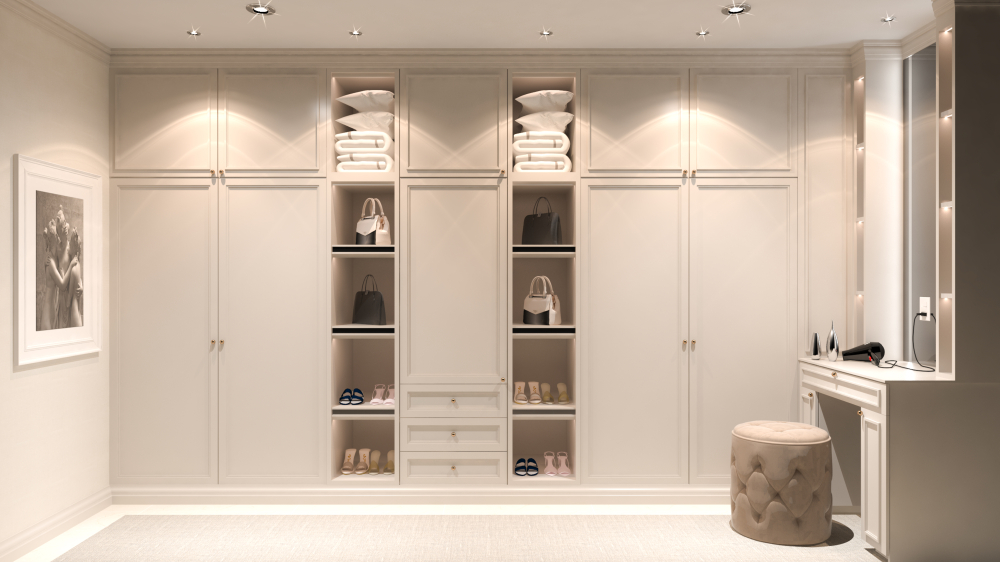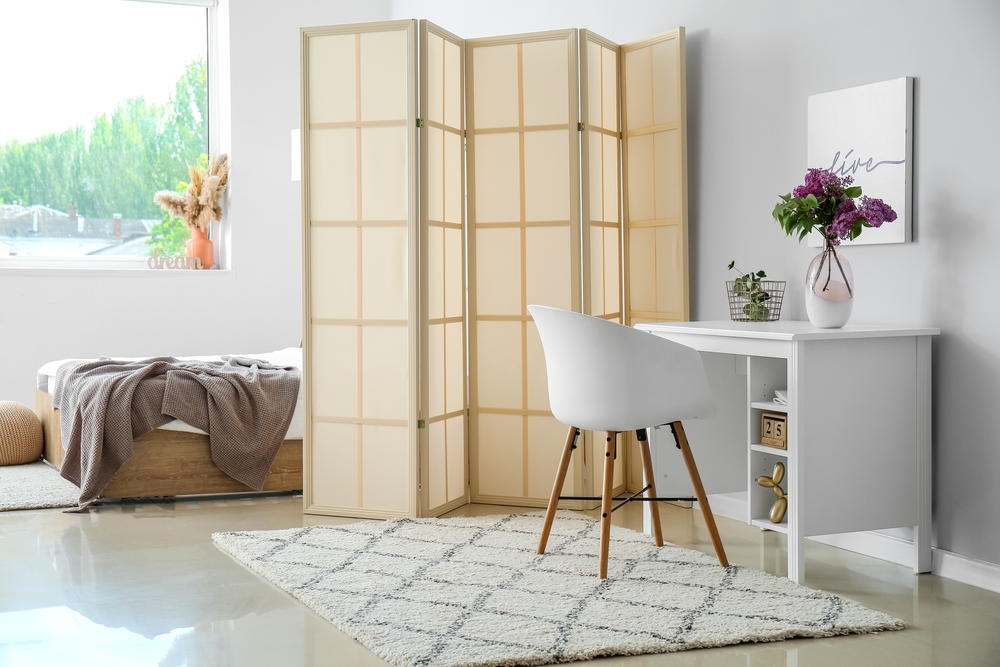As the lines between work, rest, and play continue to blur, homeowners are increasingly needing spaces to be multifunctional, and the bedroom is no exception.
A 2025 poll revealed that 63% of people now work remotely either all or some of the time1. Space is tightening with the proportion of households living in flats, maisonettes, or apartments increasing to 21.7% in England and Wales, while 1.1 million households have fewer bedrooms than they require2, according to the Office for National Statistics.
From home offices to home gyms, our private spaces are now being reimagined to meet modern needs.
Joanne Dodsworth, Head of Bedrooms at Wren Bedrooms, shares her top design insights for transforming your bedroom into a stylish, functional, and calming multipurpose haven.
1. Maximise with Fitted Wardrobes
“A well-designed fitted wardrobe can do more than store your clothes; it can create order, elevate your space, and even free up room for other activities like working or exercising.
Joanne suggests, “Rather than cramming in mismatched furniture, I recommend bespoke fitted storage tailored to your lifestyle. You can incorporate pull-out trays for accessories, integrated shoe storage, and even concealed compartments to keep surfaces clear and productive.”

She says this frees up precious floor space, perfect for laying down a yoga mat or slotting in a compact exercise bike. Mirrored doors will also create the illusion of a wider and brighter space, given their light reflecting qualities.
2. Incorporate Your Desk Thoughtfully
Remote work demands more than just a chair in the corner. Joanne advises blending the desk into your fitted wardrobes or storage units to avoid sacrificing additional wall or floor space.
“If possible, position your desk by a window as natural light boosts productivity and gives your eyes something to rest on between tasks.
Finishes and colours play a key role too, as gloss finishes reflect light and can help a small room feel larger, while darker colours create a more cocooned, moody vibe.”
And don’t forget your call backdrop, she says. “Try to position your desk so your bed isn’t visible behind you. It creates a sense of separation, even in the same room.”
3. Create Clear Zones
Just as open-plan homes benefit from distinct areas, your bedroom should have clearly defined zones for different activities, according to Joanne.
“Colour blocking is a great way to delineate spaces, or you can also use rugs, such as one plush rug under the bed, and a different one under the desk, for example.”, she says.
Another trick is layering tonal accessories. “Stick to one colour family but vary the depth. Think soft sage bedding paired with a forest green desk chair, as it subtly signals a shift in purpose within the room.”
Room dividers, open shelving, or even tall plants can visually separate working and resting areas without overwhelming the space too, she recommends.

4. Light by Mood and Function
Lighting can make or break a multi-use bedroom. Joanne emphasises the importance of layered lighting for flexibility throughout the day.
“Warm-toned lamps create a restful environment, while cool, brighter lights are essential for working or getting ready. Just be consistent with the tone to avoid visual discord.”
She recommends dimmer switches for ultimate control, adding, “It allows you to fine-tune the ambiance, whether you’re winding down or powering through emails. But do check bulb compatibility first, as not all will be compatible with dimmer lights.”
5. Opt for Multi-Tasking Furniture
Functionality doesn’t have to come at the expense of design, as many bedroom furniture pieces can be multipurpose.
“Think hidden storage, such as jewelry trays, rotating shoe racks embedded into your wardrobe, or wardrobes with integrated dressing tables or desks, and benches that serve as both seating and storage,” Joanne suggests.
Even mirrors can multitask, doubling as both a grooming tool and a light-enhancing feature when built into your wardrobe doors.
As our homes continue to evolve, the bedroom is no longer a single-purpose space. But with thoughtful design and multifunctional elements, it can be a sanctuary for every aspect of modern life, from work to wellness to deep, restful sleep.
“Start with what your space needs to do for you, then plan carefully to make every inch work smarter.”, concludes Joanne.
Revitalising Your Space: The Art and Benefits of Furniture Restoration





